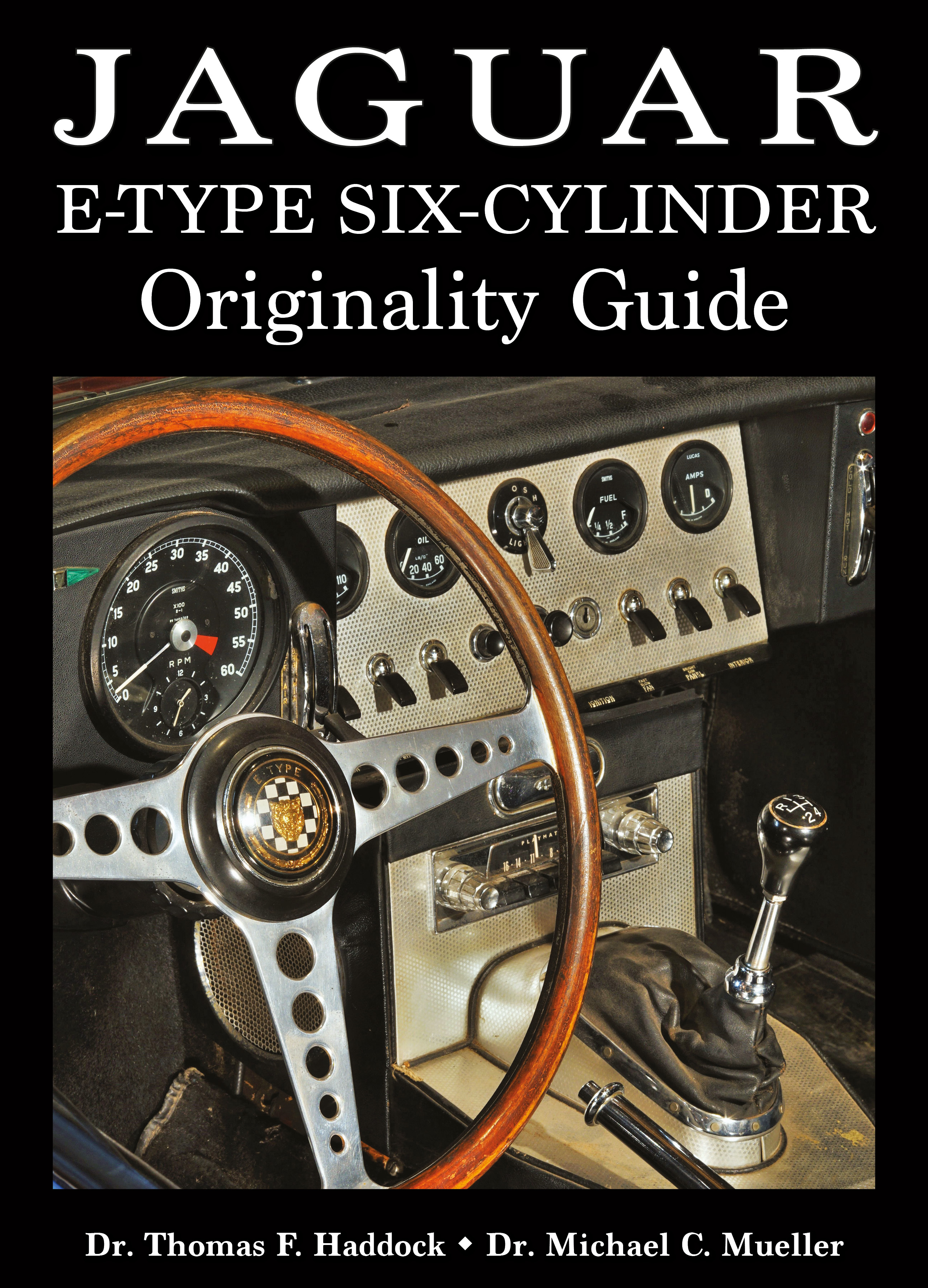
|
|
|
|
|
|
Corvette
Chevorlet Corvettes contemporary with the E-Type were fitted with cast-iron pushrod-operated V8 engines such as this one.
|
|
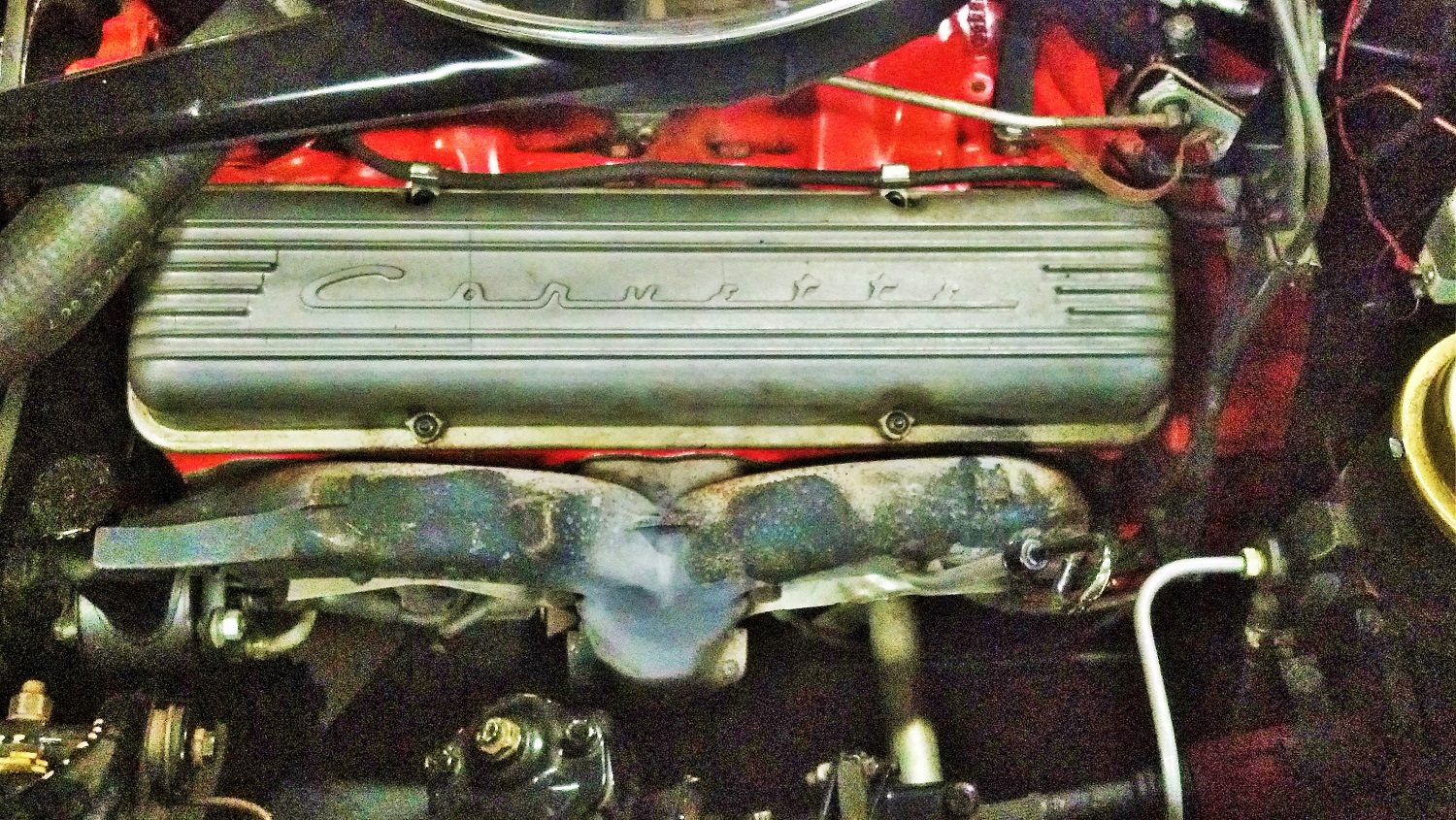
|
|
|
|
|
|
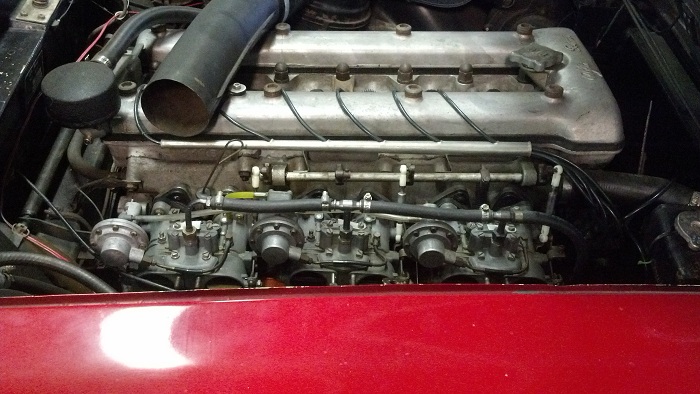
|
|
Alfa Romeo
Alfa Romeos contemporary with the E-Type were fitted with four- and six-cylinder in-line, double-overhead-cam engines. This is a six-cylinder engine.
|
|
|
|
|
|
Jaguar Mk 2 sedan
The Mark 2 sedan was the contemporary compact jaguar sedan to the E-Type. This car came out in 1959, two years before the E-TYpe, and introduced the new-style major and minor instrument clusters, as used on the E-Type.
This particular car has been modified with E-Type style louvers and body-color painted wheels.
|
|
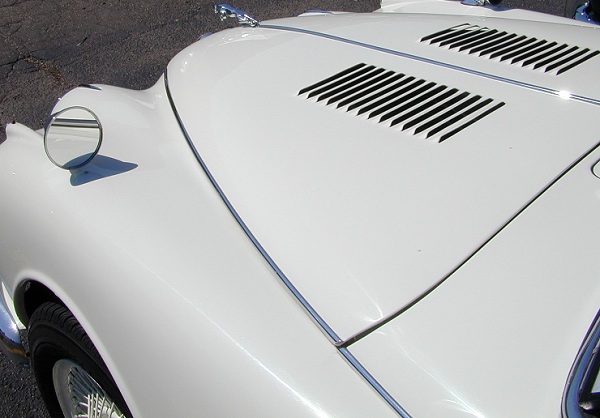
|
|
|
|
|
|
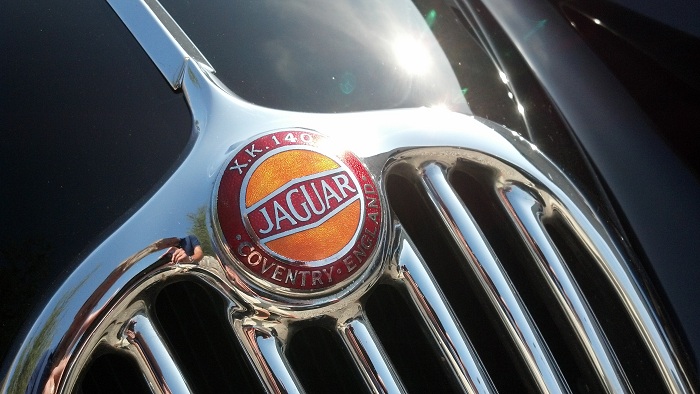
|
|
Jaguar XK-140
The XK-140 escutcheon was enameled, as opposed to the later plastic molded escutcheons used on the Mk 2 and E-Types.
|
|
|
|
|
|
Chrysler Hemi
Although not sports cars, Chrysler produced high-performance cars with powerful V8 engines.
These engines had hemispherical combustion chambers, in the same manner as XK-engined Jaguars, Alfa Romeos and Porsches, but Chrysler did this with pushrods instead of overhead cams.
These engines were colloquially known as "Hemis."
|
|
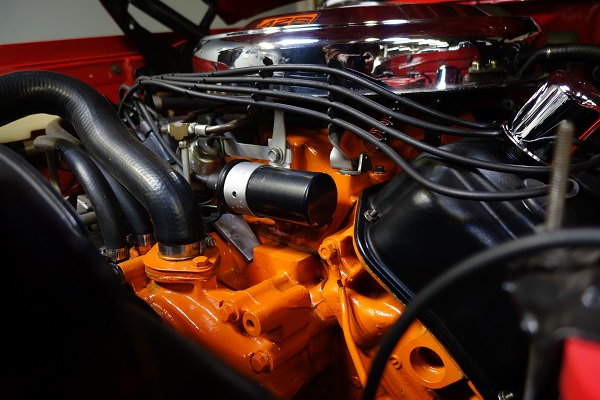
|
|
|
|
|
|
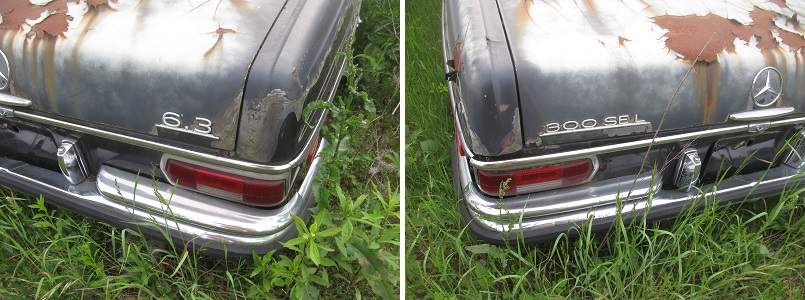
|
|
Mercedes Benz 300SEL 6.3
Like the Chrisler Hemis, the 6.3-liter dislacement 300SEL was not a sports car, but nontheless had exceptional performance.
|
|
|
|
|
|
Sunbeam Rapier
The Sunbeam Rapier was essentailly a sporiter version of the Hillman Minx. Here is its four-cylinder engine with dual downdraft carubretors.
It is somewhat representative of the typical small British sedans that were offered when the E-type was first introduced.
|
|
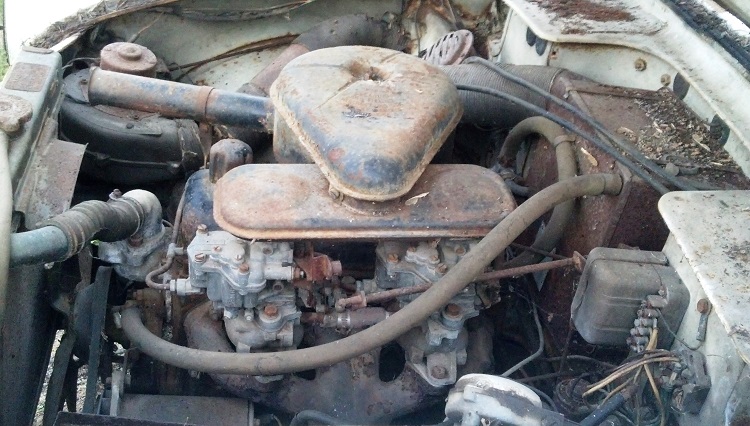
|
|
|
|
|
|
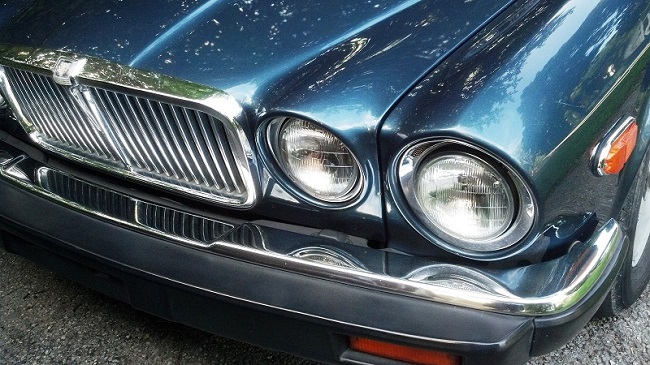
|
|
Jaguar XJ6 sedan
Introduced in 1968, just about the middle of E-type production, the XJ6 had a long production run and was the last Jaguar to be fitted with the XK engine.
While the XJ6 was a much more modern car in many ways than its predecessors, it retained the Jaguar family look.
|
|
|
|
|
|
These very small and light sports-cars populated the lower end of the price scale.
Here the small pushrod iron-head and iron-block four-cylinder engine has an "AUSTIN" rocker cover, but they would typically have had "MG"-marked covers.
|
|
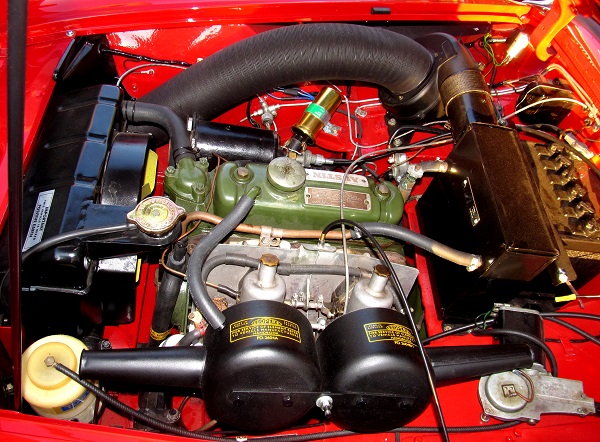
|
|
|
|
|
|
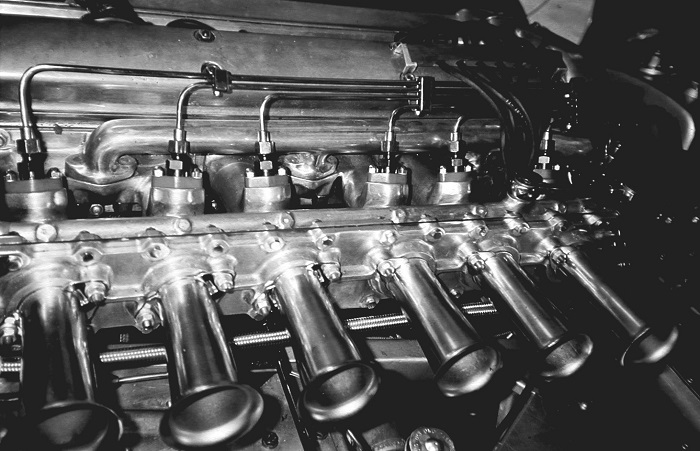
|
|
D-type Jaguar with Lucas mechanical fuel injection.
While from a commercial-model progression the XK-150 was the direct predicessor of the E-type, from an overall design standpoint the D-type was a closer precursor.
Here the XK engine is fitted with the wide-angle head and beautiful ram induction pipes leading into the throttle-body injector manifolds. In order to reduce pressure drop during full-throttle operation, this system employs a sliding-plate (also referred to as a "guillotine") type throttle.
|
|
|
|
|
|
From a production-model standpoint, the XK-150 was the direct predessor of the E-type.
The XK-150 was more in the classic Jaguar vein, with a seperate frame and traditional Jaguar styling. The E-type's styling came more from the line of C- and D-type racers.
|
|
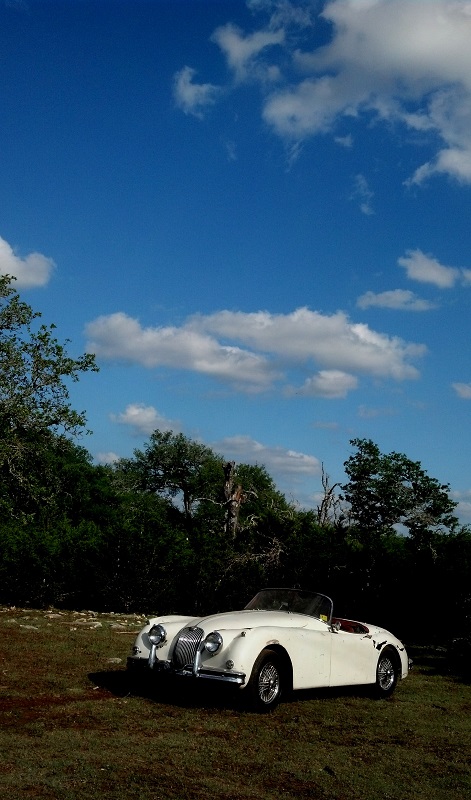
|
|
|
|
|
|
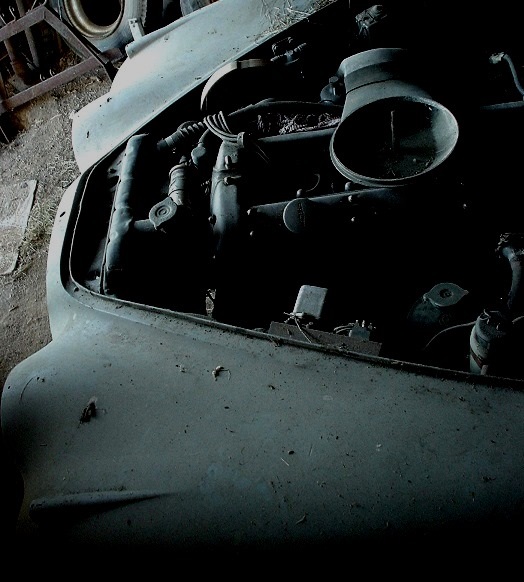
|
|
Jaguar Mk 2 engine compartment.
The Mk 2 used the same traditional Xk-engines as the E-type. Here they were offered in other displacements, however, including the original 3.4-liter mode.
|
|
|
|
|
|
Humber Super Snipe
The Super Snipe was in many ways similar to a slightly smaller Mk1 or Mk2 Jaguar sedan. It had wood trim and small wooden picnic tables in the backs of the front seats.
It was offered with automatic or manual transmissions, and had an in-line six. However, the valve train was very different from the traditional double overhead cams of the E-type. It had a complex system of push rods and rocker arms to achieve improved valve angles.
|
|
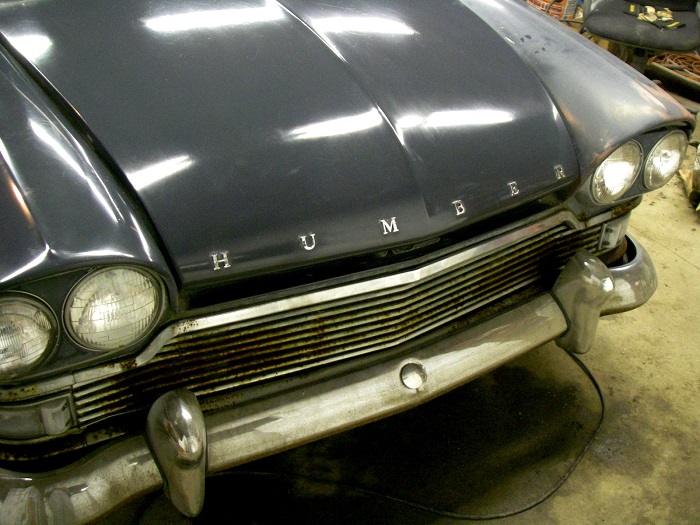
|
|
|
|
|
|
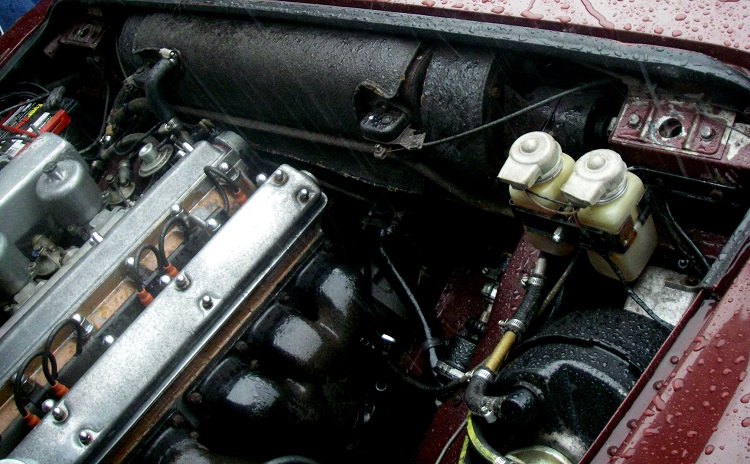
|
|
4.2-liter Jaguar Mk X sedan
The Mk X had the same basic XK "S"-type engine as the E-type, but with detail varaitaions, such as the sump, engine-driven cooling fan, and starter carburetor in place of chokes.
The trim level of the Mk X was the highest of any Jaguar of the E-type's era. At the back of the engine compartment here is showing a special trim cover over the the heater.
|
|
|
|
|
|
Front of Jaguar MkX sedan
In a manner very similar to the E-type, the MkX was a dramatic technological step forward when it was first introduced one year after the E-type in 1962.
It had monocoque constructon and a wider version of the E-types independent rear suspension. It was available with manual or automatic transmissions, but most U.S. market cars were equipped with automatics.
|
|
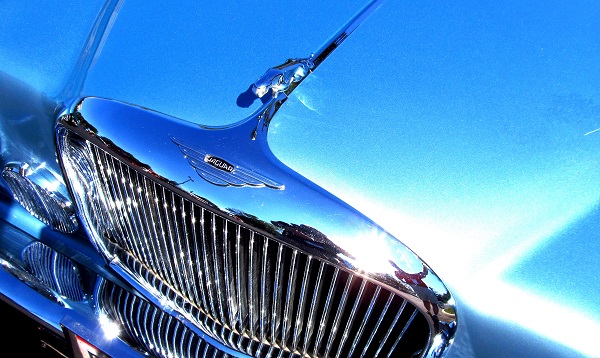
|
|
|
|
|
|
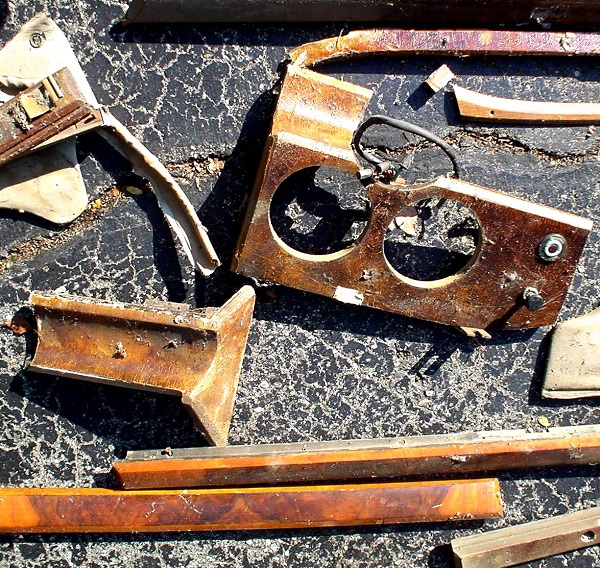
|
|
Dashboard maerial from a Jaguar Mk2 sedan
Unlike the E-type where all trim was funcitonal in nature, the Jaguar sedans used decorative wood trim. The layout of the instruments was of the Mk2 was the same as the E-type; it was in the Mk2 that this instrument configuraiton was introduced.
Wood was used in numerous places in E-types, but in all cases it was functional, not decorative.
|
|
|
|
|
|
Jaguar SS100
The SS100 of the mid-1930s was the first of William Lyons' true production sports cars (excepting the SS90). This exquisite roadster was the first in a line of striking production sports cars, continuing with the XK-120 in 1949, and culminating in the E-type in 1960.
The SS100 introduced the name "Jaguar," but as a model name, not the company name. The company changed its name after World War II. As with all of Lyons' pre-war cars, the SS100 used a pushrod engine; the stunning XK engine was not to be indroduced unil the XK-120 came out.
|
|
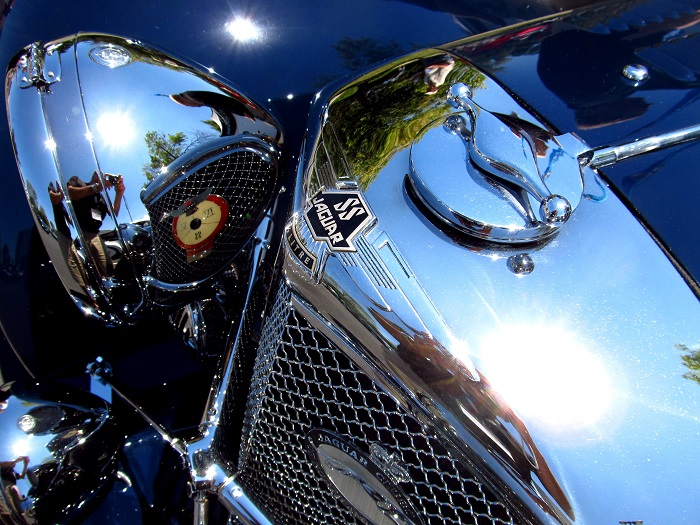
|
|
|
|
|
|
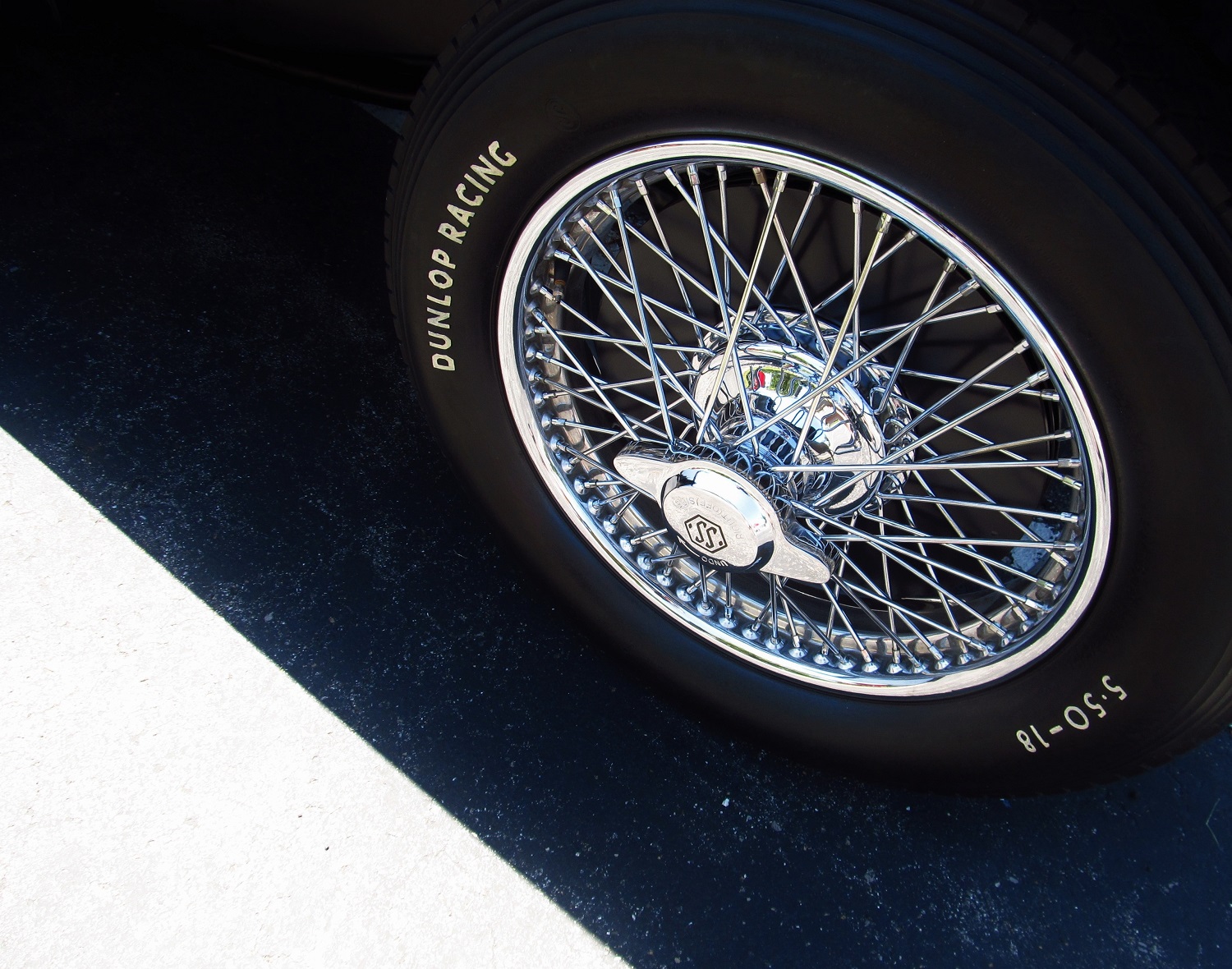
|
|
Another view of an SS100
The SS100 used narrow, large-diameter wire wheels, typical of British pre-war sports cars.
|
|
|
|
|
|
Triumph TR4 with one piston removed
The Triumph TR4, with a model run from 1961 to 1965, was a contemporary of the Series 1 E-type. It was somewhat smaller, and powered by a four-cylinder pushrod engine with iron block and head.
The TR4 was the first Triumph sports car in the TR series to have wind-up windows, in the same manner that the XK-150 was the first Jaguar sports car offered only with wind-up windows. The TR4 was generally referred to as a roadster. The XK-150, while was offered in a drophead and roadster configuration, but both had wind-up windows. Generally, the roadster designation indicated a more minimal convertible top, and in this sense the open E-types are generally referred to as roadsters.
This particular car spun a con-rod bearing while in a remote location. The roadside fix was to remove the piston and rod from the defective cylinder and tape over the oil-outlet hole on crank journal. The engine ran after this, but extremely roughly; the car was ultimately abandoned.
|
|
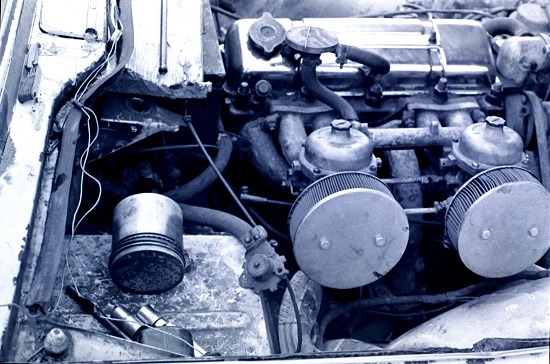
|
|
|
|
|
|
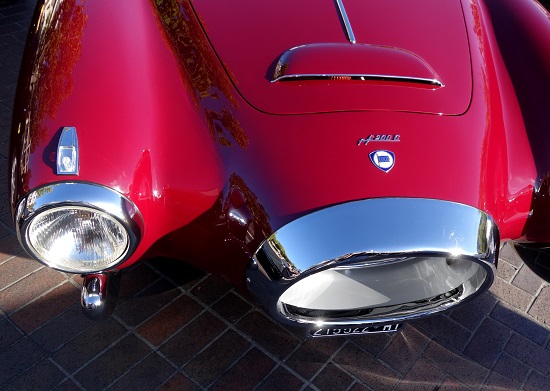
|
|
Lancia Aurelia pf200C
This low-production car (under ten were built) from the early 1950s with bodywork by Pinin Farina has a striking appearance.
The oval chrome bumper is joined by two outer bumpers running back under the two front fenders. The car was based on the Lancia Aurelia B52 model, and had a DOHC V6 engine.
|
|
|
|
|
|
This high-performance inline six with triple carburetors and tubular headers powered the Skyline 2000GT-R.
This four-door sports sedan was one of the early Japanese entries in this category. It was very successful in competition in Japan.
|
|
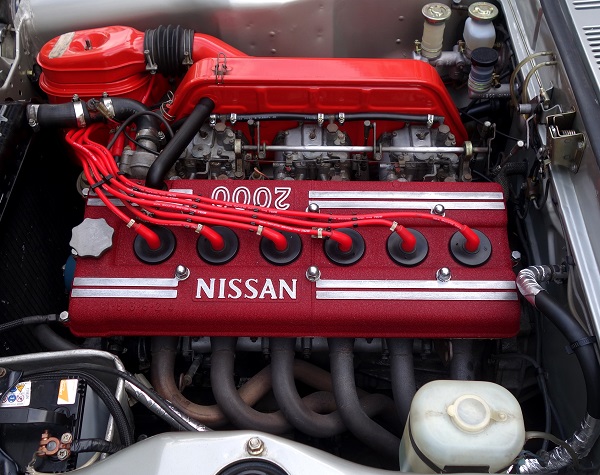
|
|
|
|
|
|
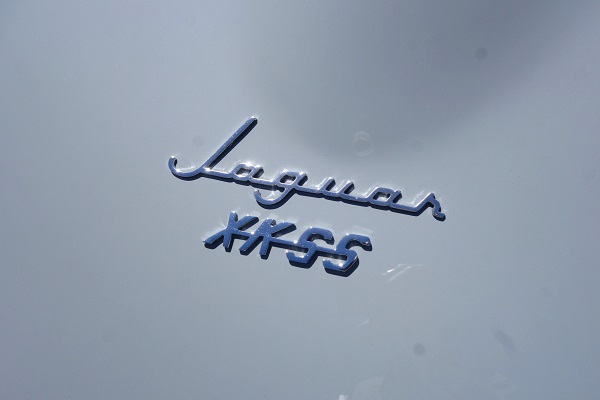
|
|
The XK-SS was Jaguar's first road-going sports car based on the D-type. Only a few XK-SS were produced before a fire at the factory ended production.
Some years later the E-type, also based on the fundamental chassis layout of the D-type, was introduced. While the XK-SS was essentailly a D-type slightly modified for the street, the E-type was designed as a production car for the road.
|
|
|
|
|
|
This 1968 Buick GS400 is one of the many American muscle cars that were produced coeval with the E-type.
The 1968 GS400 was powered by a 400 cubic inch displacement cast-iron pushrod V8 producing 340 horsepower and 440 ft-lbs of torque. Carburation was by a single downdraft four-barrel carburetor, and an automatic transmission. Standard brakes were four-wheel drums.
|
|
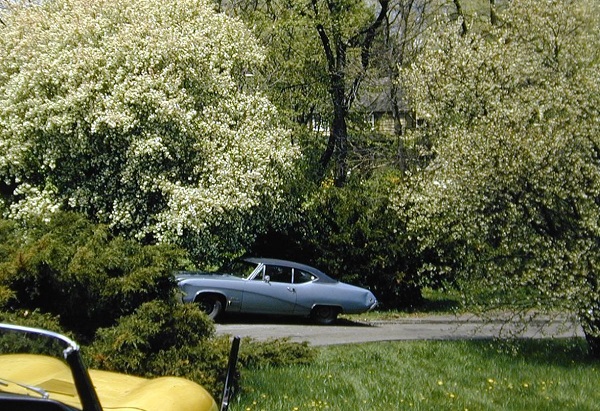
|
|
|
|
|
|
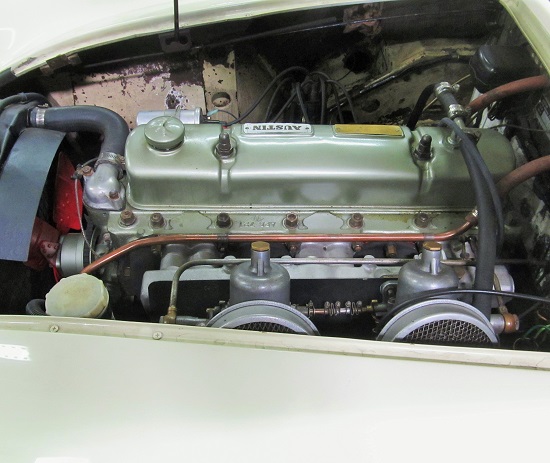
|
|
The six-cylinder Austin Healeys, also sometimes referred to as the "Big Healeys" (although this nomenclature may also incoude the four-cylinder 100-4 Healeys), were an alternative to the E-type in the years before 1968.
They were two-, but most often four-, seater cars with a ladder frame and cast iron pushrod engine. Being from a large manufacturer and of a simpler design than the E-type, the six-cylinder Healeys were a lower-cost alternative.
|
|
|
|
|
|
48-spoke 15-inch wire wheel with standard-size hub..
The wire wheels used by the factory on XK-engined Jaguars came in different spoke lacings and different widths and diameters. However, during this period most other sports cars were fitted with wire wheels, such as this one, that have a substantially smaller splined-hub inner diameter.
While many smaller sports cars with lower power than the Jaguars had these smaller hub inner diameters, many high-performance cars did as well. These include Aston Martin, Ferarri, and Maserati.
|
|
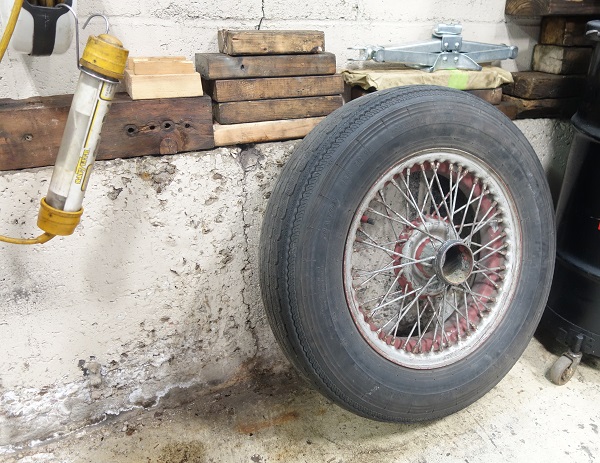
|
|
|
|
|
|
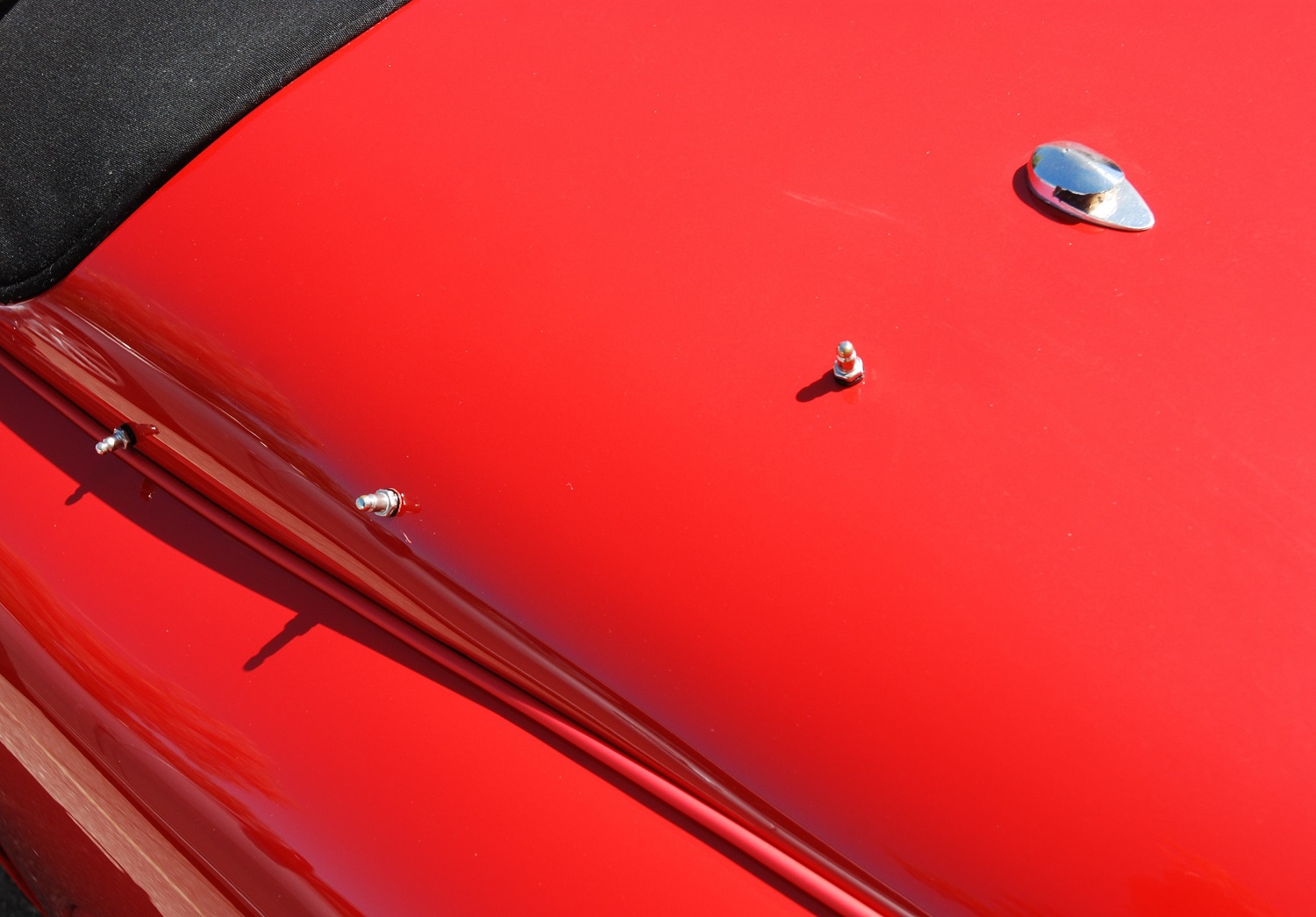
|
|
View of the minimal area to the rear of the cockpit of an XK-150 roadster.
The high level of restoration is typical of the state of many Jaguars at this point. Well-preserved originals exist, but many have been obliterated by compete restorations.
However, when restorations are not completely accurate they can be corrected over time as the true original state of the given car is better determined thorugh research. Thus, even though the can will never be in its true original state, the restoration can be brought more and more close the proper configuration to give an example showing how the car originally was.
|
|
|
|
|
|
This A40, approximately a 1953 model, is a smaller format sedan than the Jaguar MkVII of approximately the same time.
Even when the smaller Jaguar 3.4 sedan (now referred to as a "Mark 1," in reference to the Mark 2 that came later) Jaguars were still larger than most of their British contemporaries.
|
|
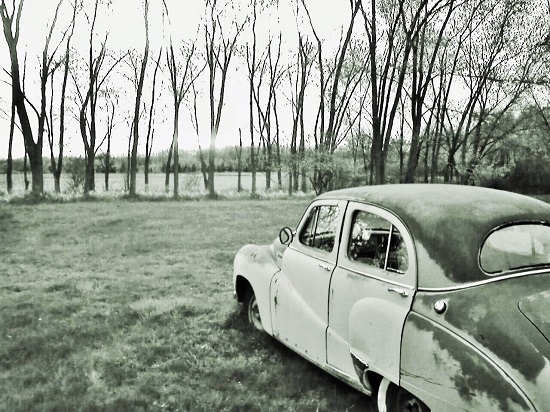
|
|
|
|
|
|
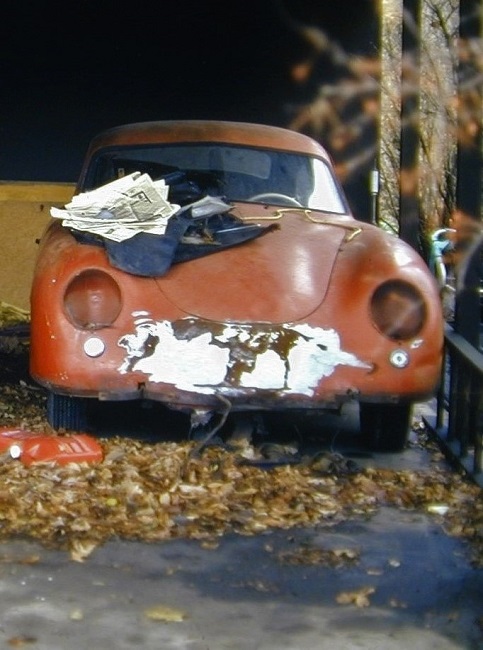
|
|
This early Porsche was a contemporary of the XK-120 and XK-140 Jaguar models.
|
|
|
|
|
|
Allard dashboard.
Many British cars of the era just preceeding the introduction of the E-type had instrument clusers in the center of the dash, instead of in front of the driver.
Likely this was to minimize variations when left- and right- hand drive models were both available. The XK series sports cars, as well as the saloon Jaguars all had this configuration as well.
The first XK-engined Jaguar to locate the main instruments in front of the driver was the Mk2 sedan, introduced in 1959. The instrument layout of the Mk2 was almost identical to that of the E-type, that was introduced in 1961.
|
|
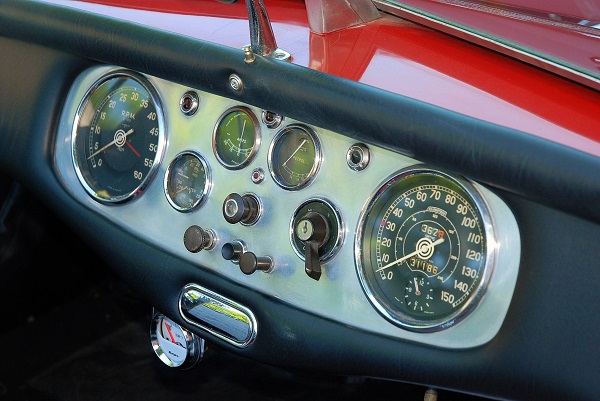
|
|
|
|
|
|
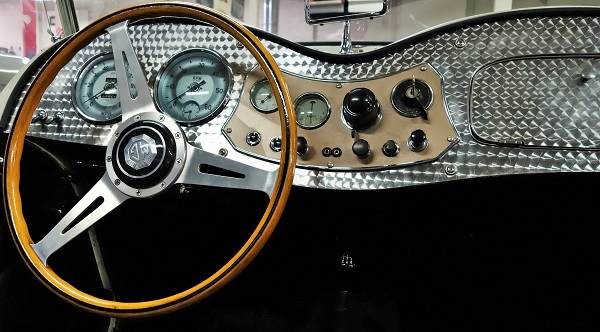
|
|
The classic dash of an MG TD, a car produced during the time of the XK series.
This particular car is somewhat modified, with the turned finish dash and alloy woodrim steering wheel.
|
|
|
|
|
|
The 1959 Cadillac fins were among the most extreme produced on an American car during the period preceeding and overalpping E-type production.
This is a dramatic styling contrast to the minimilistic and functional E-type design.
|
|
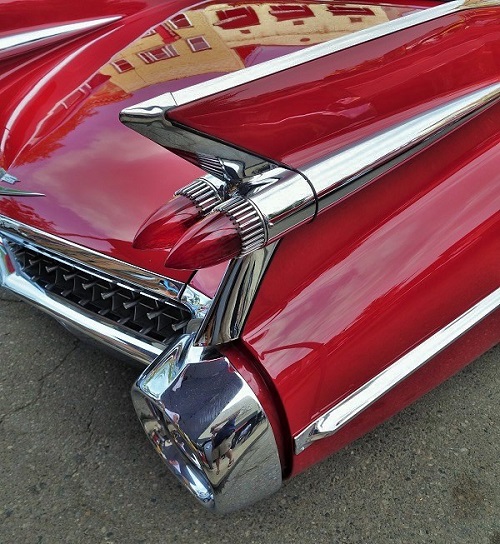
|
|
|
|
|
|
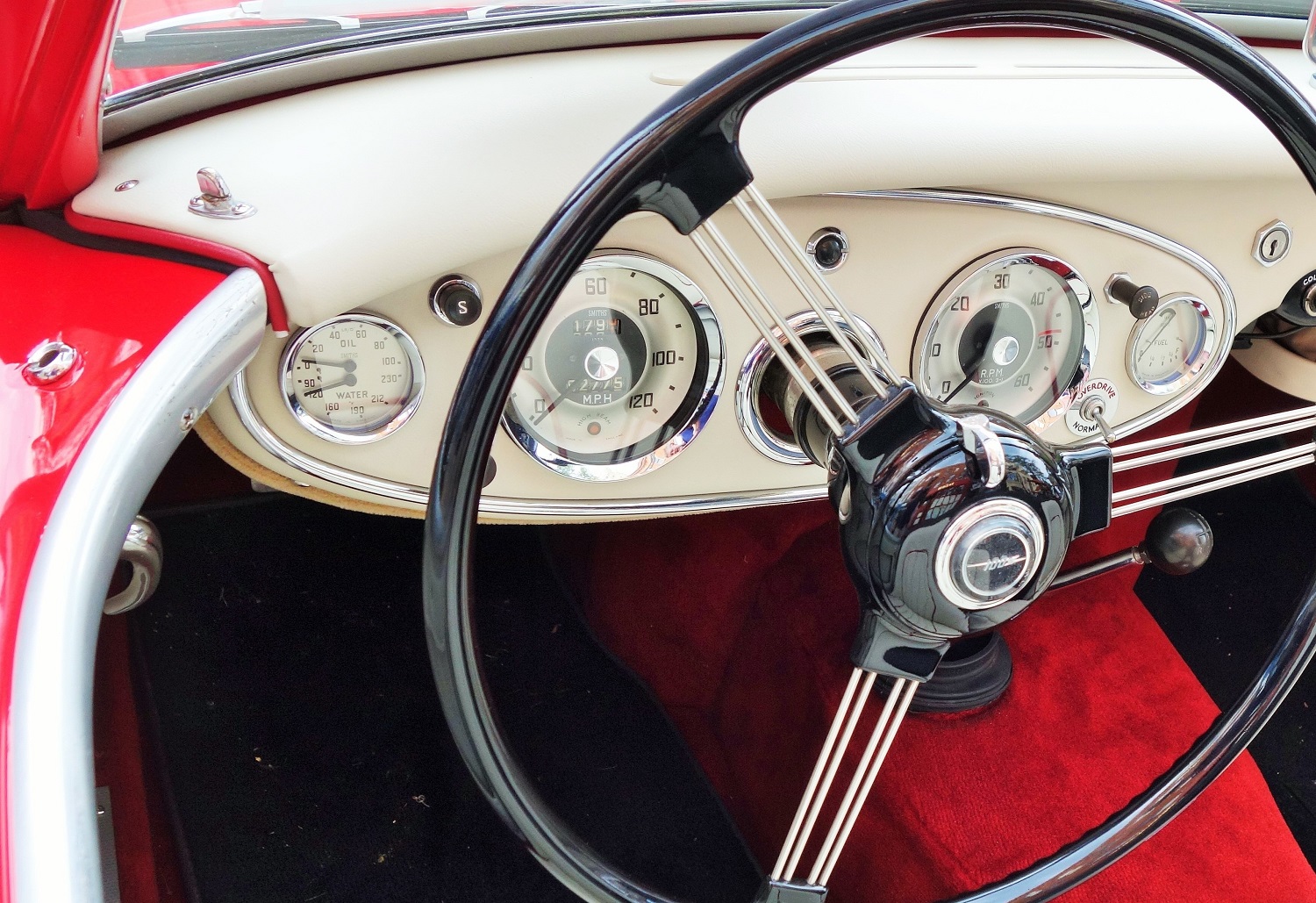
|
|
The six-cylinder Austin Healey models, such as the 100-6, had a much more stylized dashboard than the very functinoal layout of the E-type.
Here there is lots of bright chrome, and multi-toned instrument faces, with a purely stylistic oval chrome trim piece surrounding the insturment cluster.
|
|
|
|
|
|
Pontiac flathead engine.
A traditional inline 8-cylinder flathead engine, of the sort used on many American cars in the pre- and post-World-War-2 era. This engine configuration was in use when the XK-engine was introduced in 1948/9.
This is an extremly simple design. The cam-in-block drove tappets that pushed the valves upward.
The valves opened into combustion chambers extending out from the cylinders onto the top of the block, rather than being located above the pistons themselves, as is generally the case with the valve-in-head conifguration.
|
|
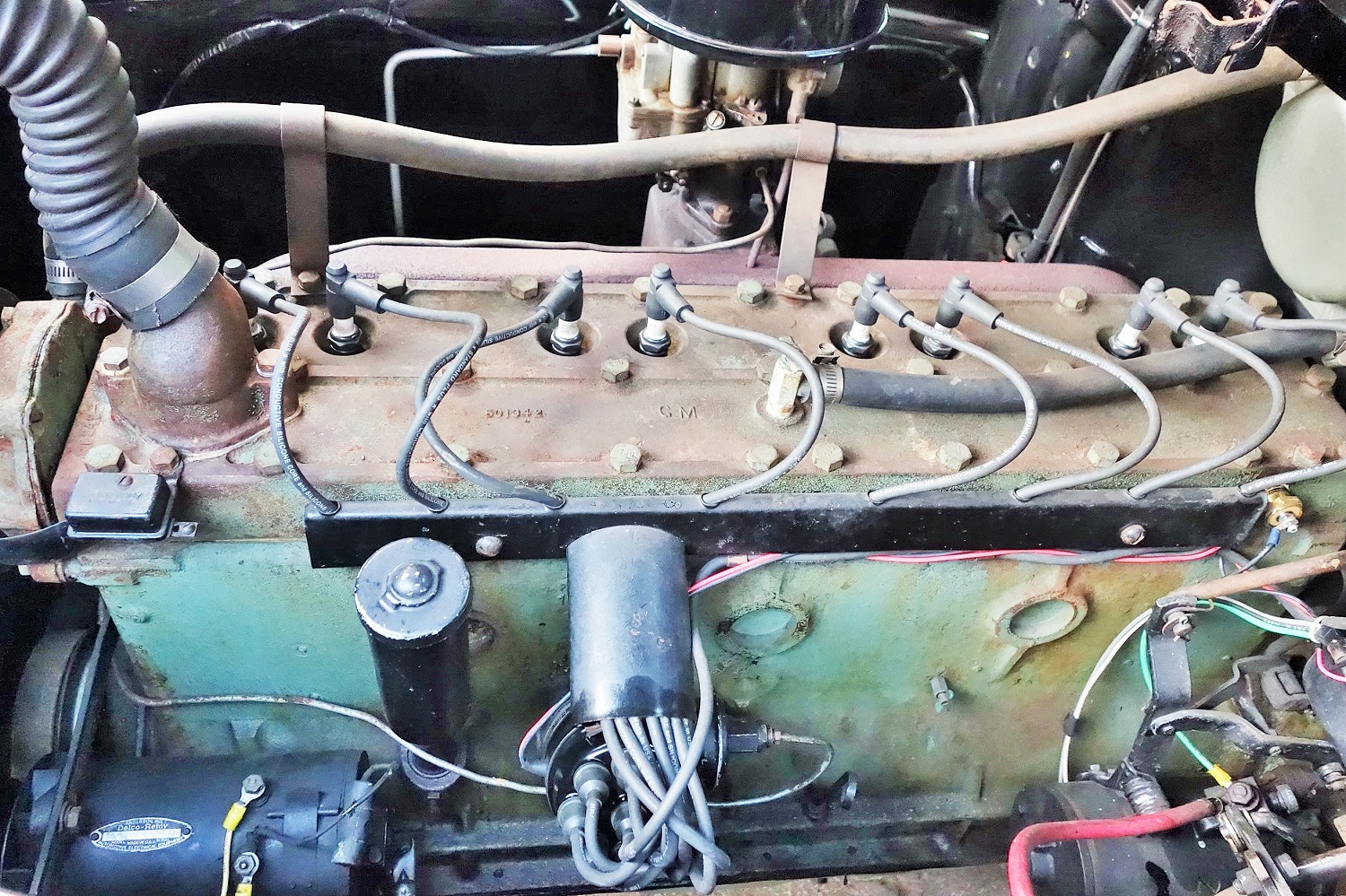
|
|
|
|
|
|
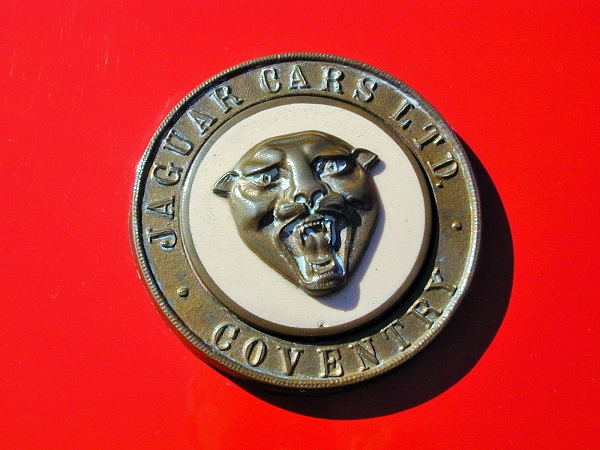
|
|
Jaguar XK-120 escutchen.
The XK-120 cars carried this brass escutchen labeled only "JAGUAR CARS LTD. COVENTRY," with expression of the XK-120 model designation.
The multi-piece unit had a enamel center section with a brass Jaguar head facing forward.
The quality of the escutchens used on Jaguar sports decreased from this point, with the XK-140 being chromed brass with mulit-color enamel, and the XK-150 and E-type having back-painted clear plastic escutchens.
|
|
|
|
|
|
A 100-6 BN4 or 3000 BT7 parked on a street in the evening.
|
|
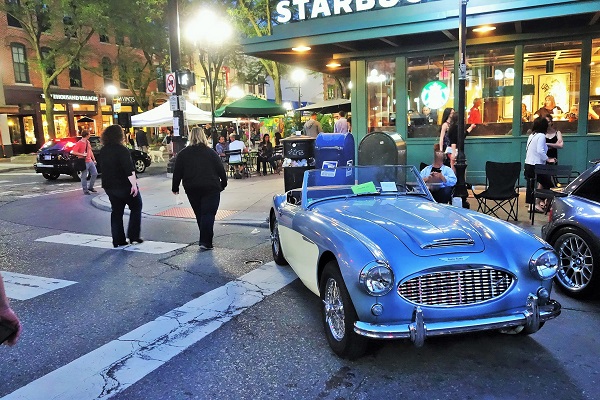
|
|
|
|
|
|
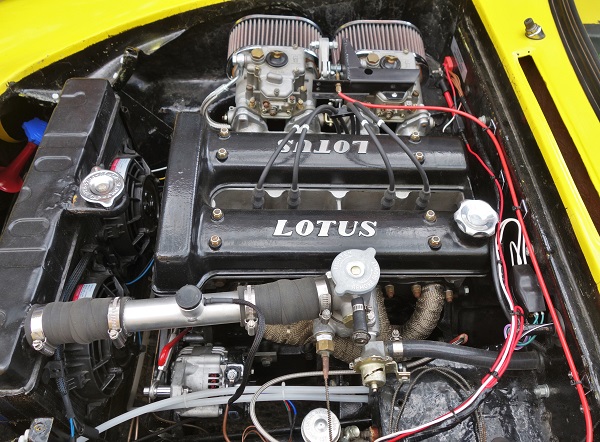
|
|
Lotus four cylinder engine.
Similar in configuration to the XK engine in that it was a DOHC, multiplly-carbureted engine, the main focus of the Lotus car was small size and lightness.
|
|
|
|
|
|
Ford Edsel dashboard.
The complex and somewhat odd dashboard on this Ford Edsel is relatively representative of those from the U.S. car industry around the period of the introduction of the E-type.
It is in stark contrast to the fully-functional E-type dashboard.
|
|
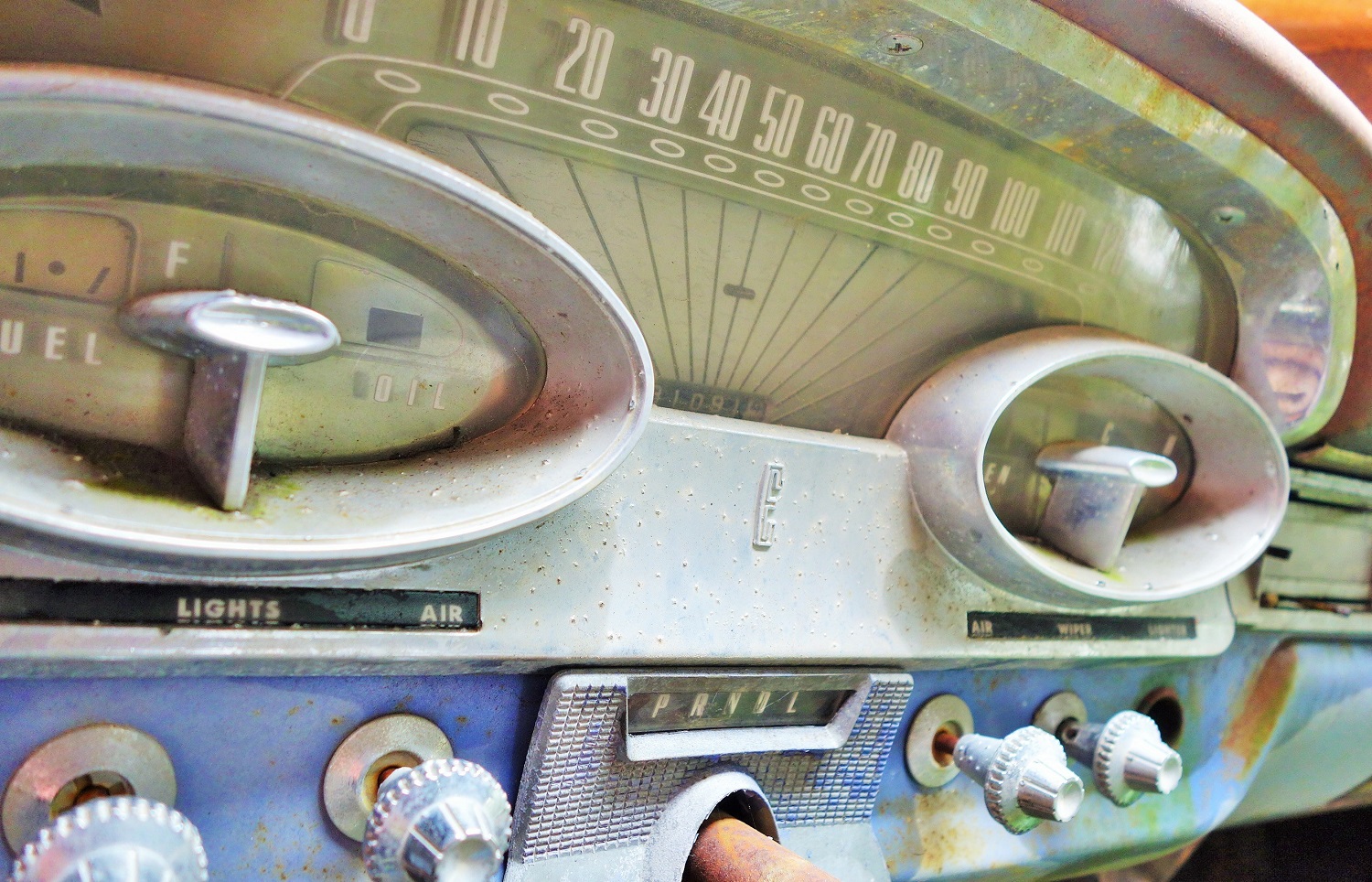
|
|
|
|
|
|
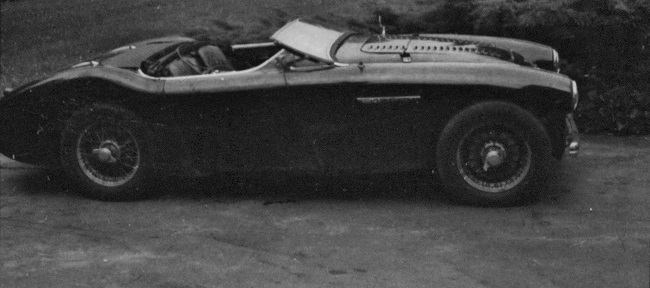
|
|
Only a few more of these 100M cars were made than the outside-latch E-types.
|
|
|
|
|
|
Citron DS21 dashboard.
While the dashboard of this Citron DS21 sedan has a high-quality look, the steering-wheel design is highly unorthodox, with a single spoke curving out from the center of the wheel.
Unlike classic Jaguar sedans this is a car with numerous unorthodox innovations throughout the design.
|
|
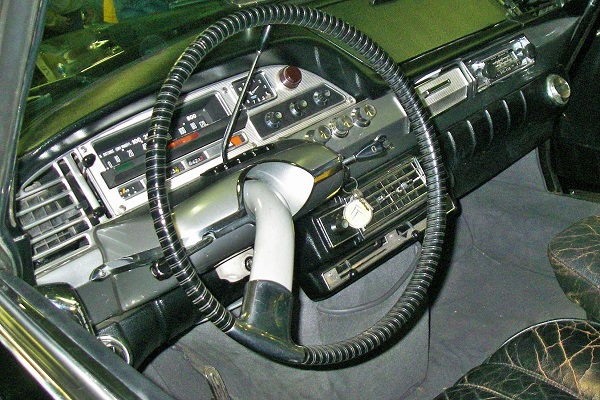
|
|
|
|
|
|
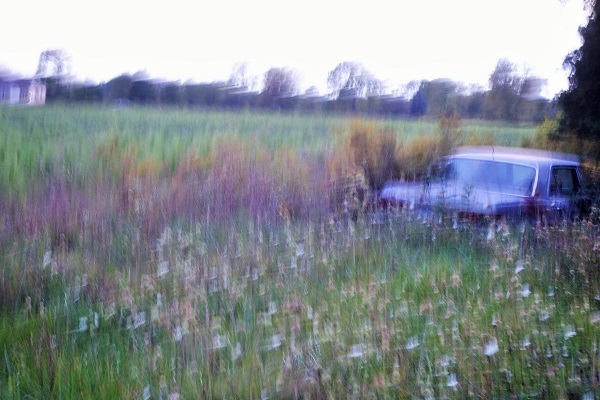
|
|
Mercedes, such as this 116 body sedan, were competitors to Jaguar sedans. This is a 450 SEL.
|
|
|
|
|
|
Bentley cars were more expensive than Jaguars, but in many ways similar.
In the 1930s they, like Jaguar in the 1950s, had a series of LeMans wins. Bentley made larger cars, not technically sports cars but performance-oriented cars of large size, as well as sedans.
Jaguar made performance-oriented sedans, but true sports cars as well, dating back to the 1930s with the SS-100.
|
|
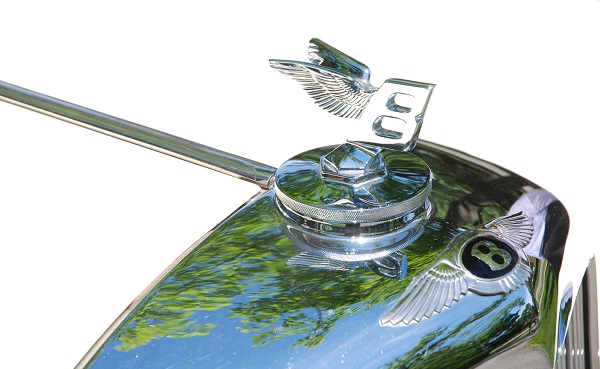
|
|
|
|
|
|
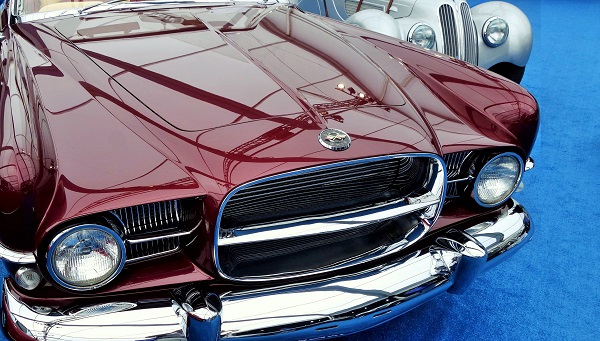
|
|
The Dual-Ghia was only in production for a couple of years in the mid-1950s. It was a made in the U.S., based on Chryslers, with a Dodge chassis and a body by Ghia of Italy.
|
|
|
|
|
|
This Aston-Martin was on display at an auction event in this rough, un-restored state. Often referred to as "barn finds," such cars have recently gained great interest in the collector-car arena.
In some instances, perhaps not this one, the rough cars are actually displayed with hay tossed on them as if they just came out of a barn.
The "barn find" nomenclature suggests the excitement of finding something valuable that has been lost, and perhaps also the idea that the car will be in a very original state compared to a restored car. While their condition is good, restored cars often stray quite far from their original state, and many parts are often not the originals but replacements.
Note the simularities between the Aston-Martin engine and the Jaguar XK engine. These include the chromed domed head nuts and cam-cover retaining nuts, and SU-HD8 carburetors (in this case two instead of the three used on E-types).
|
|
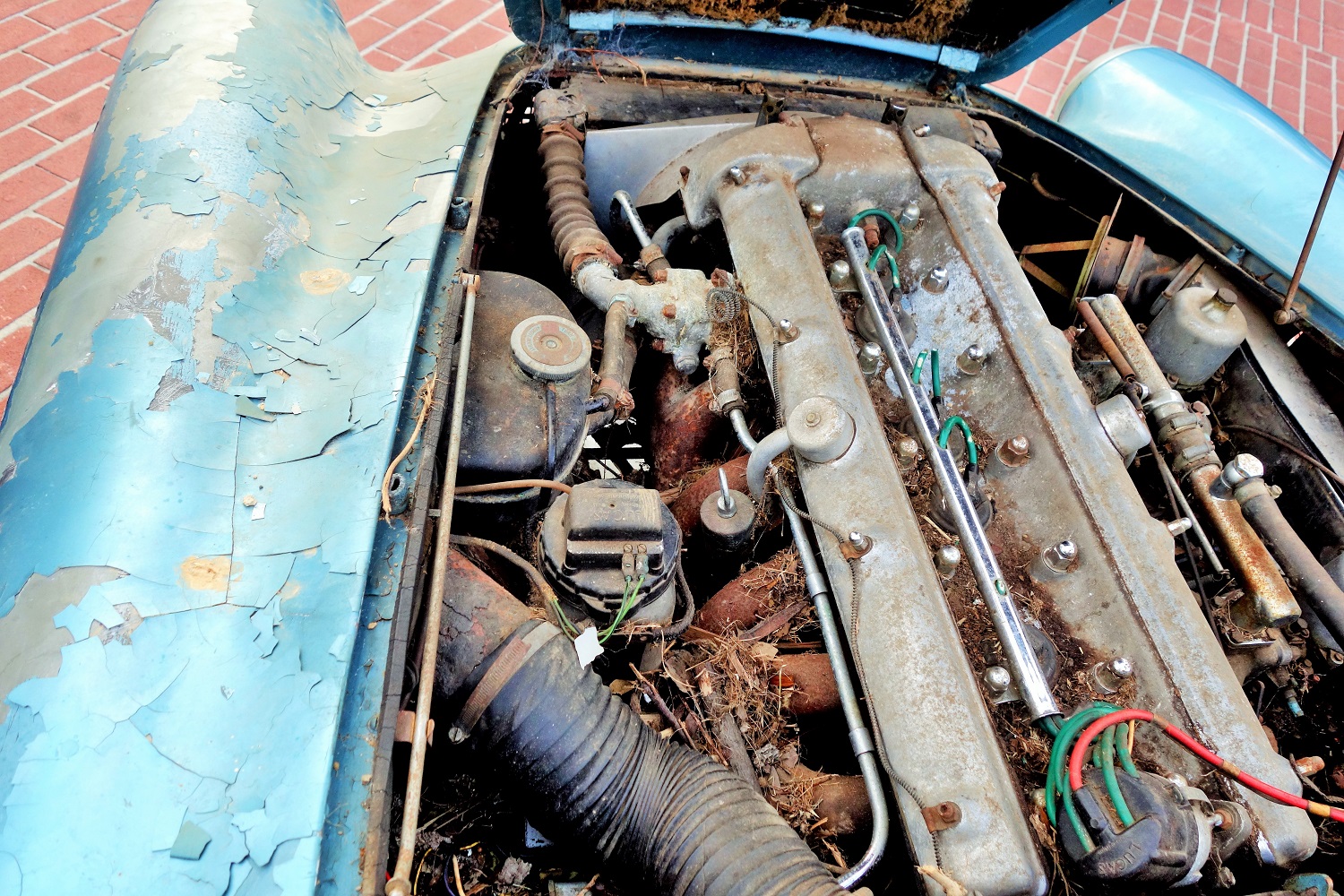
|
|
|
|
|
|
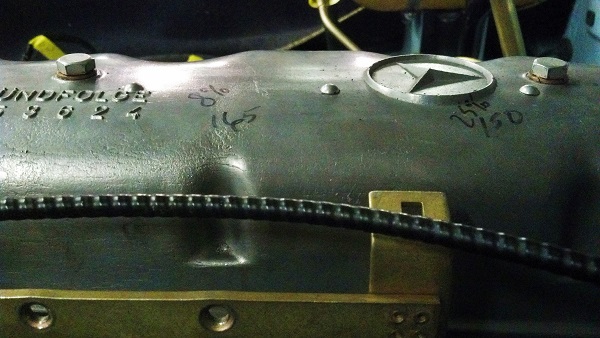
|
|
This Mercedes-Benz engine, made around the time of E-type production, shows the as-cast finish typically found on German cars (as well as those from many other countries). This is in contrast to many of the British-made engines that have polished surfaces.
The firing order is cast into the surface of this cam cover, as is the Mercedes-Benz star.
|
|
|
|
|
|
EJag.
The club decal on the left clearly refers to the Mercedes-Benz Club of America.
On the right, however, is what appears to be an E-type club decal. In fact, EJAG refers to the Eastern Jaguar Group, a club on the east coast of the U.S.
|
|
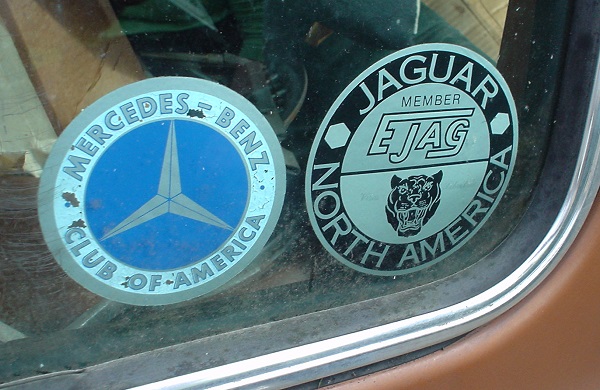
|
|
|
|
|
|
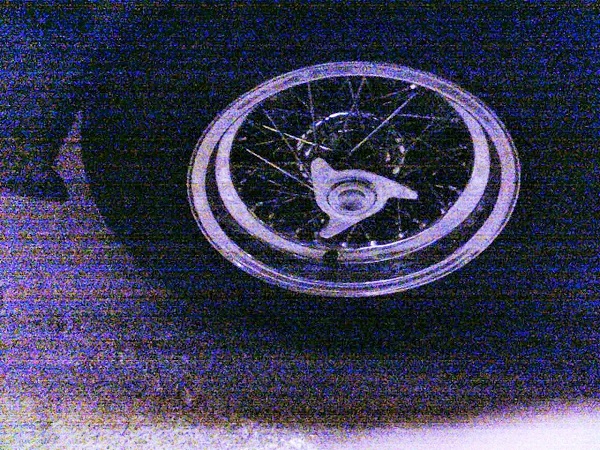
|
|
Boranni wire wheel.
These alloy-rim wire wheels were standard equipment on various Italian exotics, but versions were available fit to Jaguars.
|
|
|
|
|
|
Pushrod-engine Jaguar sedan.
This pre-XK-engine sedan has the jaguar mascot, in the style of the SS-100 and later XK-engined cars.
|
|
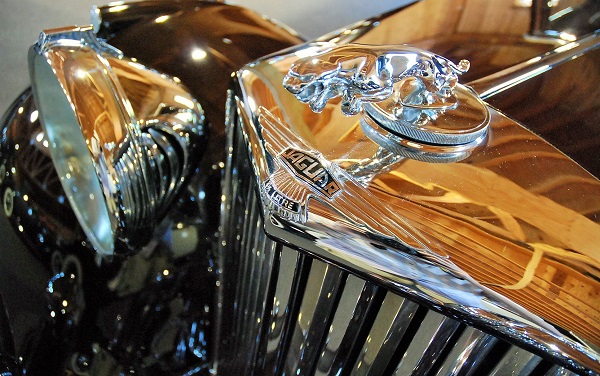
|
|
|
|
|
|
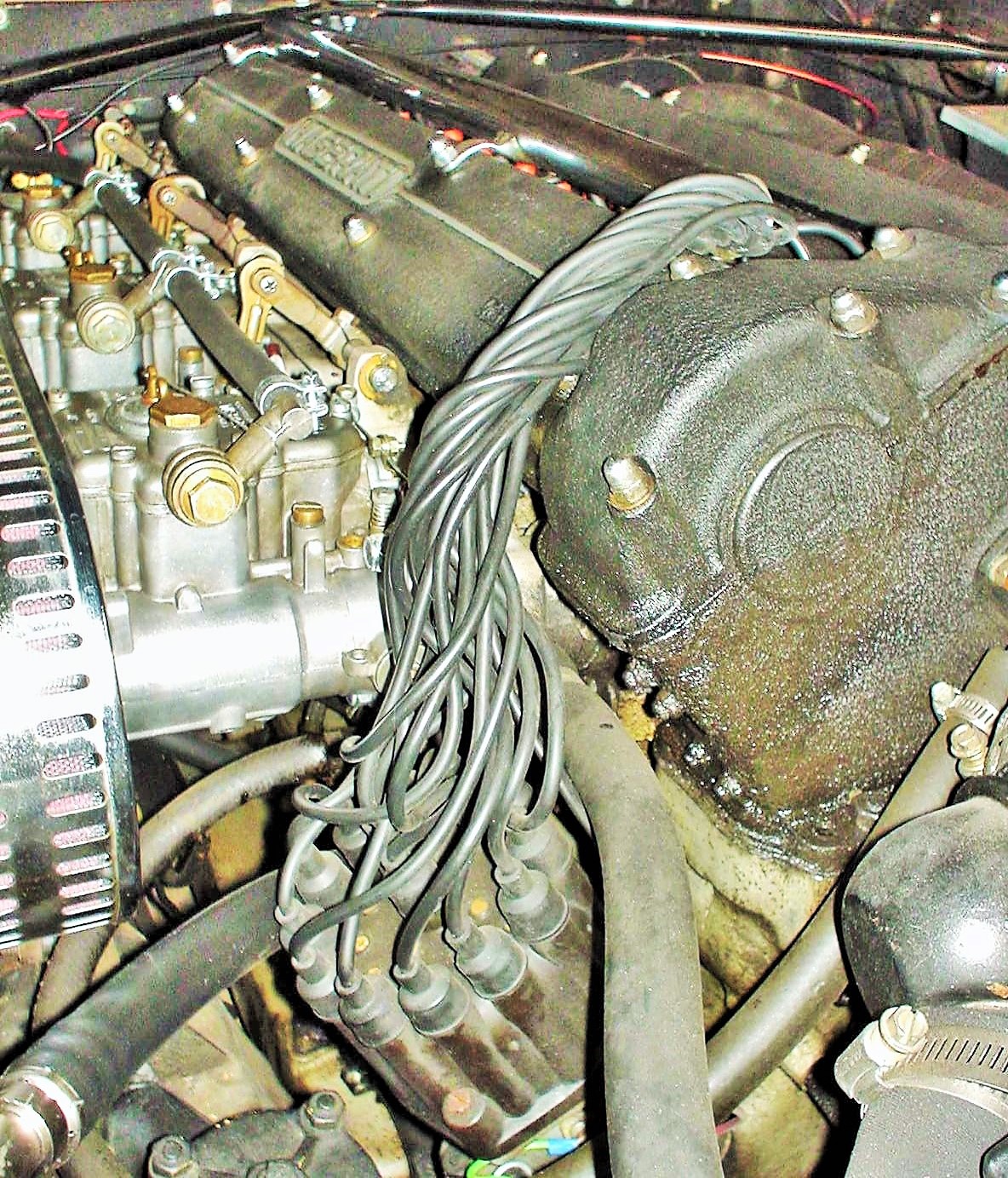
|
|
Dual-plug Maserati in-line six-cylinder engine.
Another contemporary to the E-type was the Maserati 3500 GT.
This car typically had dual spark-plugs for each cylinder, thus the 12-lead distributor seen in the lower part of the picture.
|
|
|
|
|
|
The Dodge Red Ram V-8 was the first hemispherical comubstion chamber engine (called a "Hemi" by Chrysler corporati to be used on a Dodge.
Chrysler corporation still uses the Hemi name on its engines today. However, while hemispherical combustion chambers were somewhat unusual in the early 1950s when the Red Ram was introduced, a great many current passenger car engines have hemispherical comubstion chambers.
The Jaguar XK engine has hemispherical combustion chambers, with valves driven by two cams. The Red Ram used a pushrod design to operate the valves.
|
|
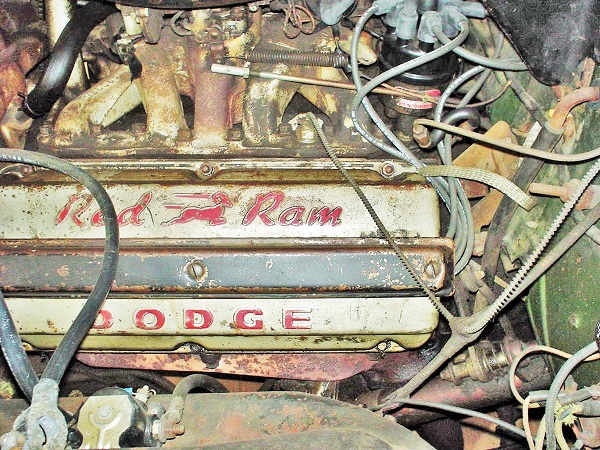
|
|
|
|
|
|
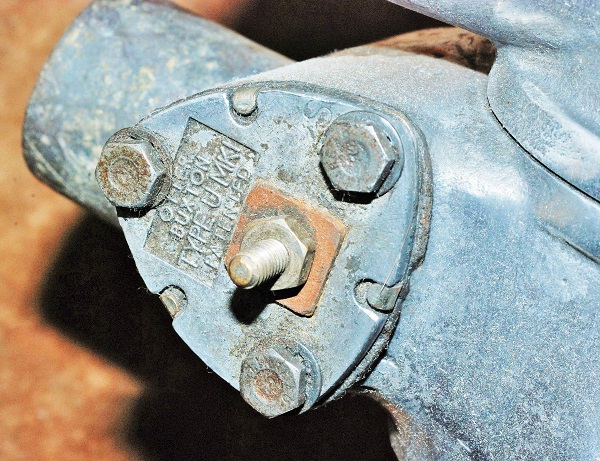
|
|
Thermostatic switch.
This thermostatic switch was located on the end of the intake manifold outlet pipe. It controlled the starting carburator on XK-150S cars and on MkX cars.
This location was blanked off on the E-type, since it had a manually-operated choke.
|
|
|
|
|

